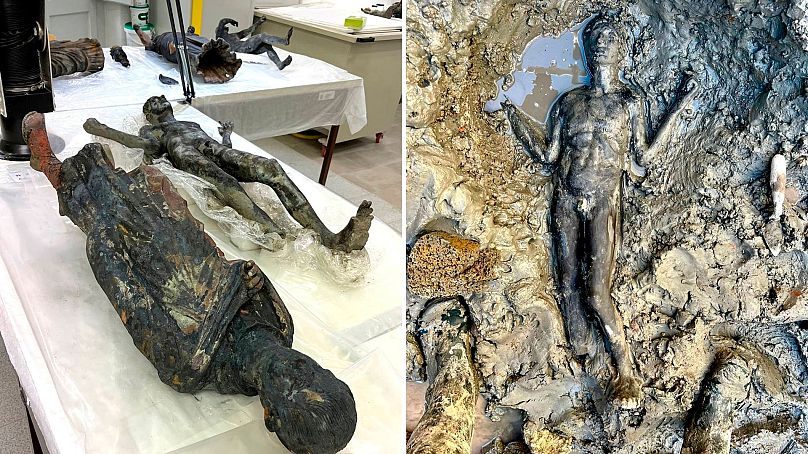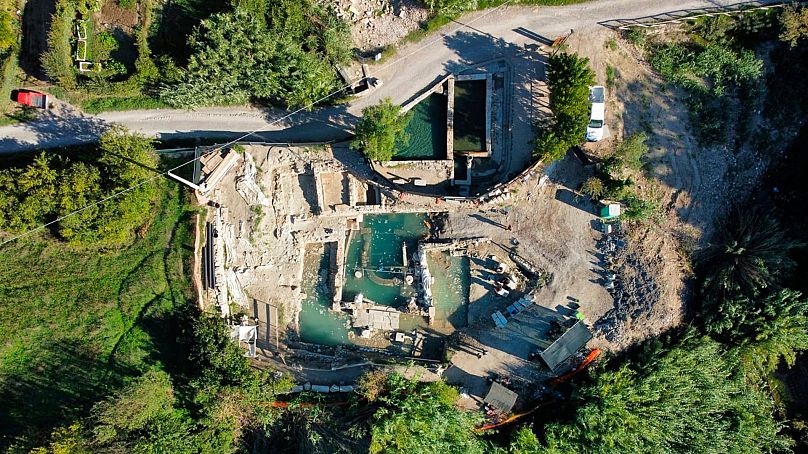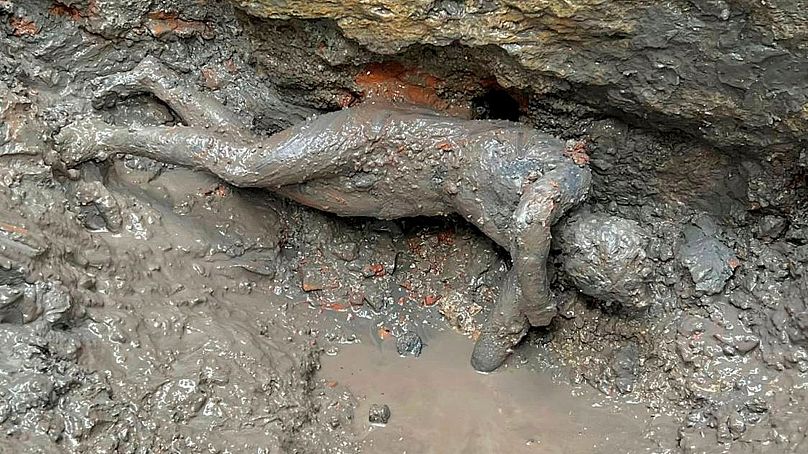Archaeologists in Italy have uncovered more than 24 perfectly-preserved bronze statues dating back to ancient Roman times in thermal baths in Tuscany, in what experts are hailing as an extraordinary find
A find that could change history.
24 well-preserved bronze statues from an ancient Tuscan thermal spring have recently been discovered by a team of Italian archaeologists, in a find which is said to "rewrite history" about the 1st and 2nd century B.C. transition from the Etruscan civilisation to the Roman Empire.
The discovery, in the sacred baths of the San Casciano dei Bagni archaeological dig near Siena, is one of the most significant ever in the Mediterranean and certainly the most important since the 1972 underwater discovery of the famed Riace bronze warriors, according to Massimo Osanna, Italy's director of museums.
Thanks to the mud that protected them, the two-dozen 2000-year-old figurines and other bronze objects were found in a perfect state of conservation, bearing delicate facial features, inscriptions and rippled tunics.
Alongside the figures were 5,000 coins in gold, silver and bronze, the Italian Culture Ministry said.
What is the significance of this discovery?
Jacopo Tabolli, who coordinated the dig for the University for Foreigners in Siena, said the discovery was significant because it sheds new light on the end of the Etruscan civilization and the expansion of the Roman empire, which was marked by wars and conflicts across today's Tuscany, Umbria and Lazio regions.
And yet, the bronze statues show evidence that Etruscan and Roman families prayed together to deities in the sacred sanctuary of the thermal baths, with the statues bearing both Etruscan and Latin inscriptions
"While there were social and civil wars being fought outside the sanctuary between the second and first centuries B.C., inside the sanctuary the great elite Etruscan and Roman families prayed together in a context of peace surrounded by conflict," explains Tabolli.
"The statues have inscriptions to the divinity of the fountain, and there are inscriptions in Latin and in Etruscan. We are talking about masterpieces of antiquity that add to, and open, a new chapter in the history and the study of bronze statues and the sacred rites in the period between the Etruscans and the Romans," he added.
The find also represents the largest deposit of bronzes from this era in Italy, notable also because most surviving antiquities from the period are primarily in terracotta.
As a result of the hugely significant Mediterranean discovery, the Italian Culture Ministry has announced the construction of a new museum to house the sculptures in the area.














